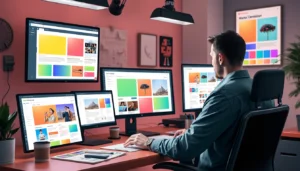Mastering Arduino Techniques
Arduino is a popular open-source electronics platform that allows anyone, from beginners to advanced users, to create electronic projects easily and quickly. It has gained immense popularity due to its user-friendly interface, flexibility, and cost-effectiveness. With endless possibilities for innovation, mastering Arduino techniques can open up a whole new world of creativity for tech enthusiasts.
Whether you are a hobbyist, a student or a professional, mastering Arduino techniques can take your skills to the next level. In this article, we will explore the basics of Arduino, its capabilities, and some techniques to help you become an expert in using this versatile platform.
Understanding Arduino
Arduino is essentially a microcontroller – a small computer on a single integrated circuit. It consists of a programmable chip, input/output pins, and a USB interface for communication with a computer. This compact design enables users to connect sensors, actuators, and other electronics components to create interactive projects by simply writing code.
Arduino boards are available in various shapes and sizes, with the most popular being the Arduino Uno. It is equipped with 14 digital input/output pins, 6 analog inputs, and a USB connection for programming and power supply. Other popular boards include the Arduino Mega, Nano, and Leonardo, each with different capabilities and configurations.
Mastering Arduino Techniques
1. Learn the Basics of Coding
To get started with Arduino, you will need to learn the basics of coding in the Arduino integrated development environment (IDE). The IDE is where you will write and upload code to your Arduino board.
Arduino uses its own simplified version of the C++ programming language, making it easy for beginners to pick up. You can start with simple projects such as blinking an LED or creating a basic circuit to get familiar with the coding syntax, and then move on to more complex projects.
2. Understand Input/Output Pins
Arduino boards have different types of pins, each with its specific function. The digital pins can be set as inputs or outputs, while the analog pins are used for reading analog signals such as temperature, light, or sound. Understanding how these pins work and interact with sensors and actuators is crucial for creating successful projects.
3. Utilize Libraries
Libraries are pre-written codes that can be used to simplify the coding process for complex functions. Arduino has a vast library of codes for various sensors, displays, and other electronics components, making it easier to incorporate them into your projects. Learning how to properly use libraries can save you time and effort in your projects.
4. Experiment with Sensors and Modules
Arduino is a versatile platform that can be used to create projects in various fields, such as robotics, home automation, and Internet of Things (IoT). Through experimenting with different sensors and modules, you can learn how to integrate them into your projects and explore different applications.
5. Explore Multiple Projects
The best way to learn any skill is through practice. Arduino provides a vast community of users who have shared their projects and codes, giving you an endless supply of inspiration and learning opportunities. Start by replicating projects and then modify them to add your unique touch.
In Conclusion
Mastering Arduino techniques can be a fun and rewarding experience. It allows you to bring your ideas to life, learn new skills, and join a supportive community of tech enthusiasts. With its endless possibilities, Arduino is an excellent platform for anyone looking to delve into the world of electronics and coding.
Now that you have a basic understanding of Arduino and its techniques, it’s time to start exploring! Visit Elektronika24.pl to find all the necessary components, tutorials, and resources to get started on your Arduino journey. Happy prototyping!





Leave a Reply